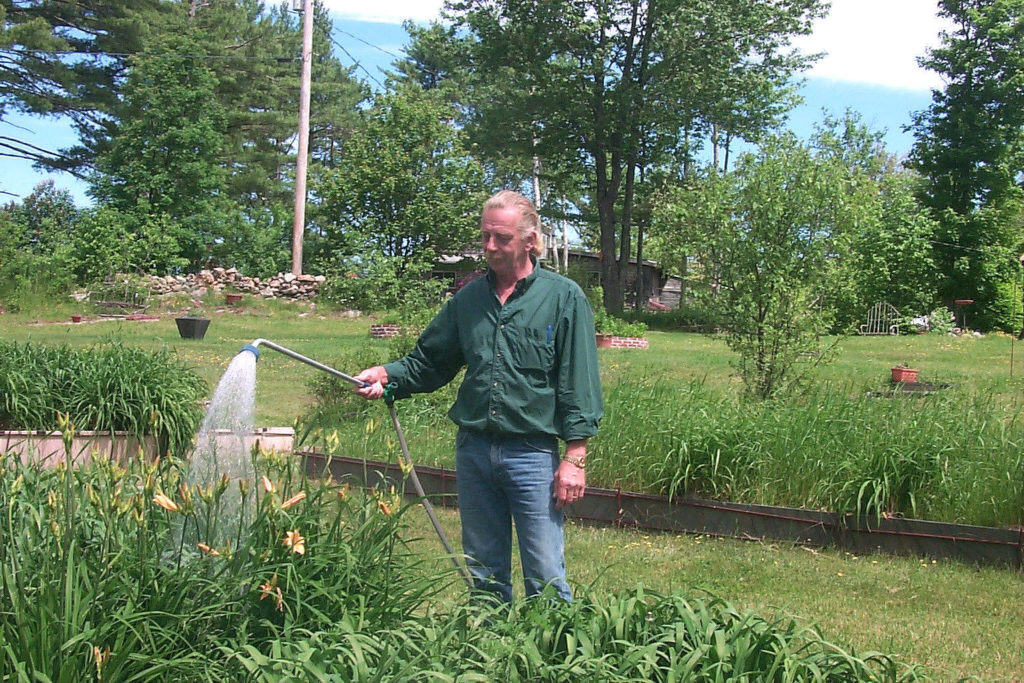3 essential watering tools for beginning gardeners

Watering is an essential part of maintaining a garden. Part of delivering water properly to plants involves having the right equipment. However, with so many options out there — from drip irrigation to timed sprinklers — it can be intimidating for gardeners to figure out what they need when it comes to watering tools.
Experts generally agree that there are 3 essential tools that all gardeners should have in order to properly water their garden. Here’s what you need to know about picking the right ones for you, according to local experts.
Hose
A hose is an essential garden tool, if you don’t have one already. For hoses, quality really matters, especially for a home garden.
Tom Estabrook, vice president of Estabrook’s Garden Center which has locations in Yarmouth and Kennebunk, said that low-quality hoses will wear out or fail at the metal ends, both where the hose attaches to the spigot and where water is released.
“A lower grade hose is just not a smart way to go,” Estabrook said. “You’re going to always pay in the long run with a lower grade hose. You really want to understand the quality of the house you’re purchasing.”
When it comes to hoses, though, expensive isn’t always better.
“Don’t just look at the price,” Estabrook said. “Just because it’s a high price doesn’t mean it’s a great hose.”
He recommends the brand DRAMM for hoses.
“DRAMM makes an excellent garden hose,” Estabrook said. “It’s no kink, it’s heavy industrial grade. That’s all we use here commercially in all of our greenhouses.”
For gardeners that need to haul their hoses back and forth from their plots, Kate Garland, horticultural specialist at the University of Maine Cooperative Extension, said that a lightweight hose might be preferable.
“Some of those collapsed hoses can be pretty good,” Garland said. “They’re very lightweight and portable. Those are easy to lug around. You want watering to be very convenient because that’s a really key component of gardening.”
In terms of length, Alicyn Smart, assistant extension professor and extension plant pathologist at the University of Maine Cooperative Extension, said, “the longer the better.”
Watering wand
Garland also said that a quality watering wand, which attaches to the end of the hose, is essential.
“A good watering wand is really important, one that has either a squeeze on-and-off or a shut-off that you twist so you can turn it off right at the end of the hose and not at the water source,” Garland said. “Some of them can be kind of pricey, but I do think that’s a really key tool to have.”
Garland said that a longer handled wand is also preferable.
“It helps you target the soil, so you’re not targeting the foliage of the plant which is a big no-no,” she said. “It helps you get into really thick plantings, too. If you have a wide garden bed it helps you reach into the garden bed a little bit better.”
Watering can
Though a watering can is by no means the most efficient method of watering, it is perfect for spot treating gardens if you do not have access to a spigot or a hose.
“Always having a good watering can,” Estabrook said. “It doesn’t really matter if it’s plastic or metal. Some have a little bit better nozzle, but in the end, it’s more about getting water to the plant when it needs it rather than having a perfect scenario.”
Garland said to make sure you pick a lightweight watering can with a sturdy spout that breaks water so the stream of water doesn’t plow down delicate plants.
“You don’t want it to go too big and have it be something you’re lugging around too much,” she said. “You don’t want to have that extra weight water is heavy enough as it is.”
No matter which tools you choose, watering properly is important.
“To me, how your water is more important,” Smart said. “You want to try to not get the foliage wet whenever possible to limit diseases developing on the foliage. If you only have an overhead sprayer, water in the morning so the sun dries the leaves.”
